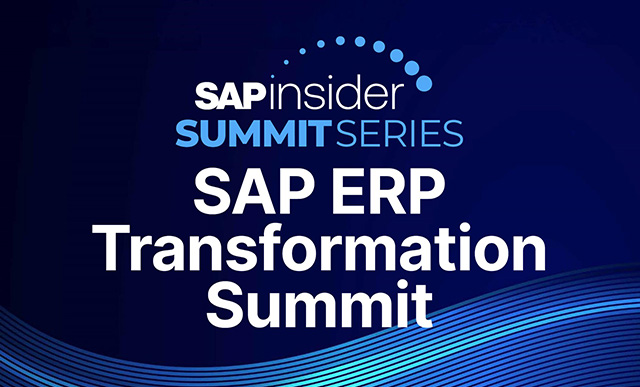SAP Supply Chain Planning
Filter By
Browse By
- SAP Analytics and AI
- SAP Application Development and Integration
- All SAP Application Development and Integration
- SAP ABAP
- SAP ABAP Development Tools
- SAP ABAP Test Cockpit
- SAP API Management
- SAP BAPI
- SAP Basis
- SAP BRF
- SAP Business Application Studio
- SAP CMS
- SAP Design Studio
- SAP Development Tools
- SAP DevOps
- SAP EAI
- SAP EDI
- SAP Extension Suite
- SAP Fiori
- SAP Fiori Elements
- SAP Integration Suite
- SAP Low Code Application Development
- SAP Low Code Automation
- SAP Netweaver
- SAP Release Management
- SAP UI5
- SAP Web Application Server
- SAP Web IDE
- SAP Business Process Management
- SAP Center of Excellence
- SAP CIO
- SAP Customer Experience
- SAP Data and Data Management
- All SAP Data and Data Management
- SAP BW
- SAP BW/4HANA
- SAP Crystal Reports
- SAP Data Archiving
- SAP Data Center
- SAP Data Governance
- SAP Data Integration
- SAP Data Migration
- SAP Data Quality
- SAP Data Services
- SAP Data Strategy
- SAP Data Visualization
- SAP Data Warehouse Cloud
- SAP DMS
- SAP Document Control
- SAP EIM
- SAP ETL
- SAP ETL Tools
- SAP HANA
- SAP HANA Administration
- SAP HANA Deployment Infrastructure
- SAP HANA Studio
- SAP Master Data
- SAP Master Data Governance
- SAP MDM
- SAP Enterprise Architect
- SAP Enterprise Asset Management
- SAP ERP
- SAP Finance
- All SAP Finance
- SAP Accounting
- SAP AR AP
- SAP Asset Accounting
- SAP Billing Systems
- SAP BPC
- SAP BRIM
- SAP Cash Management
- SAP Central Finance
- SAP Controlling
- SAP COPA
- SAP Cost Center Accounting
- SAP Currency Risk
- SAP e-invoicing
- SAP FICO
- SAP Finance Automation
- SAP Advanced Financial Closing
- SAP Financial Consolidation
- SAP Financial Planning
- SAP FX Risk
- SAP General Ledger
- SAP Global Tax Management
- SAP Hyperion
- SAP Order to Cash
- SAP Payment Processing
- SAP Profitability Analysis
- SAP Rebate Management
- SAP S/4HANA Finance
- SAP SWIFT Compliance
- SAP Treasury Management
- SAP Universal Journal
- SAP Governance Risk and Compliance
- SAP Human Capital Management
- SAP Intelligent Technologies
- SAP Platform and Technology
- All SAP Platform and Technology
- SAP Business Technology Platform
- SAP Cloud
- SAP Cloud Connector
- SAP Cloud Integration Platform
- SAP Cloud Migration
- SAP Cloud Platform
- SAP Cloud Providers
- SAP Cloud Strategy
- SAP Digital Signature
- SAP Container Platform
- SAP HANA Enterprise Cloud
- SAP Digital Asset Management
- SAP Smart Forms
- SAP HEC
- SAP Digital Integration Hub
- SAP Hyperscalers
- SAP Infrastructure
- SAP Messaging
- SAP Quality and Testing
- SAP Security
- SAP Spend Management
- SAP Supply Chain Management
- All SAP Supply Chain Management
- SAP APO
- SAP Asset Management
- SAP Business Network
- SAP Digital Manufacturing Cloud
- SAP Digital Twin
- SAP EWM
- SAP IBP
- SAP Inventory Management
- SAP Label Printing
- SAP Logistics
- SAP Manufacturing
- SAP Manufacturing Automation
- SAP MES
- SAP MII
- SAP MM
- SAP MRO
- SAP MRP
- SAP Order Management
- SAP Plant Maintenance
- SAP PLM
- SAP Production Planning
- SAP S&OP
- SAP SD
- SAP SPM
- SAP Supply Chain Planning
- SAP Track and Trace
- SAP Transportation Management
- SAP System Administration
Supply Chain Management: SAP Supply Chain Planning
The art of orchestrating supply chain planning can be intricate. Unforeseen changes in supply, demand, and market changes are a test in agility. The ability to synchronize planning for sustainable growth is the key to building a resilient supply chain.
Supply Chain Planning Defined
Supply chain planning (SCP) is a forward-looking process. It is coordinating assets to optimize the delivery of goods, services, and information from suppliers to consumers. Organizations can leverage solutions to help navigate the complexities of planning and orchestrating supply chain operations flawlessly. SAP Integrated Business Planning (IBP) is powered by SAP S/4HANA memory and is a cloud-based planning software for supply chain management. IBP is a process for aligning a company’s business goals across operational functional areas.
Supply Chain Management: SAP Supply Chain Planning
The art of orchestrating supply chain planning can be intricate. Unforeseen changes in supply, demand, and market changes are a test in agility. The ability to synchronize planning for sustainable growth is the key to building a resilient supply chain.
Supply Chain Planning Defined
Supply chain planning (SCP) is a forward-looking process. It is coordinating assets to optimize the delivery of goods, services, and information from suppliers to consumers. Organizations can leverage solutions to help navigate the complexities of planning and orchestrating supply chain operations flawlessly. SAP Integrated Business Planning (IBP) is powered by SAP S/4HANA memory and is a cloud-based planning software for supply chain management. IBP is a process for aligning a company’s business goals across operational functional areas.
Key integration elements are:
- Supply and demand
- Finance and Operations
- Functions and business processes
- Strategy outcomes
- Non-financial measures
- Cash flow, costs, and revenues.
A structured process that comes from an IBP approach enables companies to make better informed and fact-based decisions. It provides planning, what-if scenario capabilities, and real-time demand commitments, considering constraints. Increased visibility enables companies to incorporate insights from supply chain projections, financial projects, and strategic plans. There are unmatched benefits of IBP for SAP Supply Chain Planning, like optimization of logistics, improved cross-functional collaboration, planning agility, risk mitigation, and improved forecast accuracy.
SAP Supply Chain Planning yields several benefits:
- Decreased costs
- Increased profits
- Reduction in delays
- Improved efficiency
- Increase in output
- Better cooperation.
Vendor partners that can offer software solutions or operational intelligence include – SAP, Reveal or Gib.
Key Considerations for SAPinsiders are:
- Video Q&A with Eric Jones from GIB on Connecting the Dots Between Supply Chain Planning and Execution. Learn how to tame many supply chain complexities with end-to-end -supply chain solutions by watching this video. The discussion gives a perspective on why supply chain planning tools are an imperative in today’s highly complex supply chains.
- Demand Planning Alerts Increase the Accuracy of your Forecasts. David Ducray explains that demand planners are often faced with converting large amounts of data into an accurate forecast. Review different ways to spot trends and errors in data by using alerts to help you create a more accurate forecast. Allow planners the ability to manage by exception.
- Meeting Demand with a Constrained Supply Using Product Allocation in SAP APO Global ATP. Alok Jaiswal reviews the process flow of how product allocation can be used in SAP Advanced Planning and Optimization (SAP APO). This utilizes global available-to-promise (ATP) to meet customer requirements by managing the supply of scarce products.
894 results
-

 Premium
Premium
Design SAP NetWeaver BW for APO SNP Reporting and Save Your Planners’ Time
Reading time: 13 mins
SAP Advanced Planning & Optimization (SAP APO) Supply Network Planning (SNP) is used by supply planners in many companies for distribution requirements planning (DRP) and master production scheduling (MPS). However, it is not user friendly to log in to SAP SNP books to display planning data. Instead, I show how to display the data on...…
-

 Premium
Premium
SAMPLE: Design SAP NetWeaver BW for APO SNP Reporting and Save Your Planners’ Time
Reading time: 13 mins
SAP Advanced Planning & Optimization (SAP APO) Supply Network Planning (SNP) is used by supply planners in many companies for distribution requirements planning (DRP) and master production scheduling (MPS). However, it is not user friendly to log in to SAP SNP books to display planning data. Instead, I show how to display the data on...…
-

 Premium
Premium
Uncover Process Chain Execution Errors When SAP NetWeaver BI Fails To Notify You
Reading time: 8 mins
Learn how you can implement a custom watchdog program in just three steps to back up the standard messaging functionality. This ensures that you find out about process chain errors as soon as possible and allows you to quickly address issues as they arise. Also find out tips to optimize your use of the watchdog...…
-
-

 Premium
Premium
Enable Your Process Chains to React to Outcomes of ABAP Programs
Reading time: 8 mins
Process chains in BW have a built-in process type that allows you to execute ABAP programs. However, the process chain has no way of knowing whether the ABAP program succeeded or failed. You can create a custom process type that executes ABAP programs and returns a success or failure code to the process chain. Key...…
-

Empower Planners with Response and Supply Planning
Reading time: 3 mins
Why is response and supply planning so important today? While companies are still facing challenges from an ongoing pandemic, the Russia-Ukraine war only adds to the disruptive landscape. Supply chain disruptions will continue to occur as part of our global new normal. Traditional planning approaches relied on monthly planning cycles with frozen planning horizons –…
-

Achieving a Real-Time Supply Chain Through Better Collaboration
Reading time: 5 mins
Modern supply chains are more difficult to manage than ever. With production shifting to contract manufacturing and an expectation for “lot size of one” capabilities, sourcing and procurement require a new level of transparency, efficiency, and collaboration. While transitioning to a digitized supply chain meets these needs, many procurement departments are hindered by manual processes…
-

- SAP IBP
 Premium
Premium
Medical Equipment Manufacturer Prevents Equipment Shortages During COVID-19 Outbreak
Reading time: 5 mins
This SAPinsider case study shares how a large global diagnostic medical equipment manufacturer implemented business contingency plans to prepare for the increased demand and disrupted supply chains caused by the COVID-19 crisis. Membership Required You must be a member to access this content.View Membership LevelsAlready a member? Log in here
-
-

Harnessing the Power of AI for Digital Supply Chains
Reading time: 3 mins
In today’s complex environment, supply chain professionals prioritize building resilience by leveraging AI and advanced analytics, with companies like Microsoft and SAP showcasing effective applications that enhance logistics, inventory management, and operational efficiency.
-

Organik Kimya Teams Up With FourKites to Enhance Customer Satisfaction While Reducing Supply Chain Delays and Costs
Reading time: 3 mins
FourKites has been selected by Organik Kimya to enhance its supply chain visibility, allowing the chemical manufacturer to improve logistics efficiency, reduce costs, and better manage delays through real-time insights and advanced analytics.
-

 Premium
Premium
Bring Cash Forecasting into FI – You Can Do It in a Day
Reading time: 22 mins
Many sites do not initially implement the cash forecasting capability of Treasury’s Cash Management module. Configuring it retroactively is easy to do and requires little knowledge of the Treasury module. The cash-forecast functionality within Treasury’s Cash Management module provides the ability to track potential cash all along the pipeline from sale to order fulfillment...…
Become a Member
Unlimited access to thousands of resources for SAP-specific expertise that can only be found here.
Become a Partner
Access exclusive SAP insights, expert marketing strategies, and high-value services including research reports, webinars, and buyers' guides, all designed to boost your campaign ROI by up to 50% within the SAP ecosystem.
Upcoming Events
-

SAPinsider ERP Transformation Summit
October 22 - 23, 2025
New Orleans, Louisiana
United States
View Event
Related Vendors
Your request has been successfully sent

